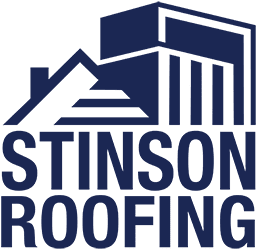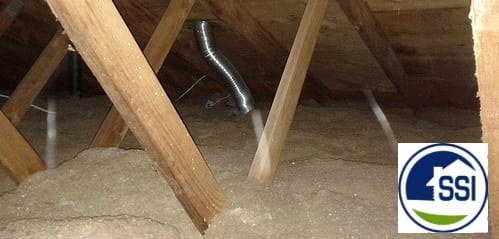What Is An Attic Bypass?
An attic bypass is a hidden air way that leads from a heated area of the home into the attic. It’s because hot air continually rises that these bypasses can be potential problems for homeowners looking to save money on energy. These leaking attic bypasses can cut the efficiency of your insulation by 30% to 70% in some cases. That means if you’re expecting to save $500 dollars a year with you attic insulation you might only be saving $150 with an improperly sealed attic.
Where To Look For An Attic Bypass?
Attic bypasses are unique to each home. However, there are common areas to find attic bypasses and you’ll want to be properly protected before you go looking for them. The best option to prevent possible skin irritation is by wearing gloves, goggles, facemask, and a long sleeve shirt. You’ll need to move insulation around so this will help keep it from getting in touch with your skin.
The following areas are commons spots to find an attic bypass:
– Chimney Chaseway
– Tops of Interior Walls
– Plumbing & Electrical Penetrations
– Dropped Ceilings
– Ceiling Light Fixtures
– Attic Entry
– Whole House Cooling Fans
– Kitchen & Bath Exhaust Fans
– Knee Walls
– Heating Ducts
– Ceiling/Exterior Wall Junctions
Signs Of Air Leaking Through Attic Bypass
There are common signs to look for when checking for air leaking through attic bypasses. If you see wet insulation, dirty insulation, dust build-up underneath the insulation, water stains underneath the insulation, frost on roofing nails, water stains on roofing boards, and places that have experienced ice damming or moisture condensation problems. These are signs that need to be taken seriously, as larger problems such as mold and rotting can take place causing structural damage to your home.
How To Fix Leaks In Your Attic Bypass?
There are a couple fixes for most of your air leaks in your home. A spray foam insulator or a caulk insulator can be used to fill in the cracks, holes, and seams leading up into your attic space. Expandable spray foam is great for larger seams and cracks and can provide a seal in a short amount of time. Caulk can be used for smaller holes and seams to plug up any leaking air. If you’re unsure of your insulating skills and inspection techniques, it’s always a good idea to contact a licensed Minnesota contractor to ensure your attic is working properly. They will inspect your home to find all attic bypasses and offer multiple insulation services that will keep your home from(figuratively) leaking money through the roof.
Common services available are spray foam insulation (open & closed) and blow-in cellulose insulation. Depending on your situation each of these styles can offer vast improvements in long-term energy savings and the comfort inside your home.
Learn More About Attic Insulation
To learn more about attic bypasses and the insulating techniques used by Minneapolis insulation contractor to prevent leaks, visit Stinson Services. We are a licensed and insured insulation contractor that’s been providing quality insulation services to the Minnesota area since 2003. We want you to feel comfortable with your home insulation project.
If you’re interested in getting a free consultation from Stinson Services call, 952-933-4510, or sign up here.


0 Comments